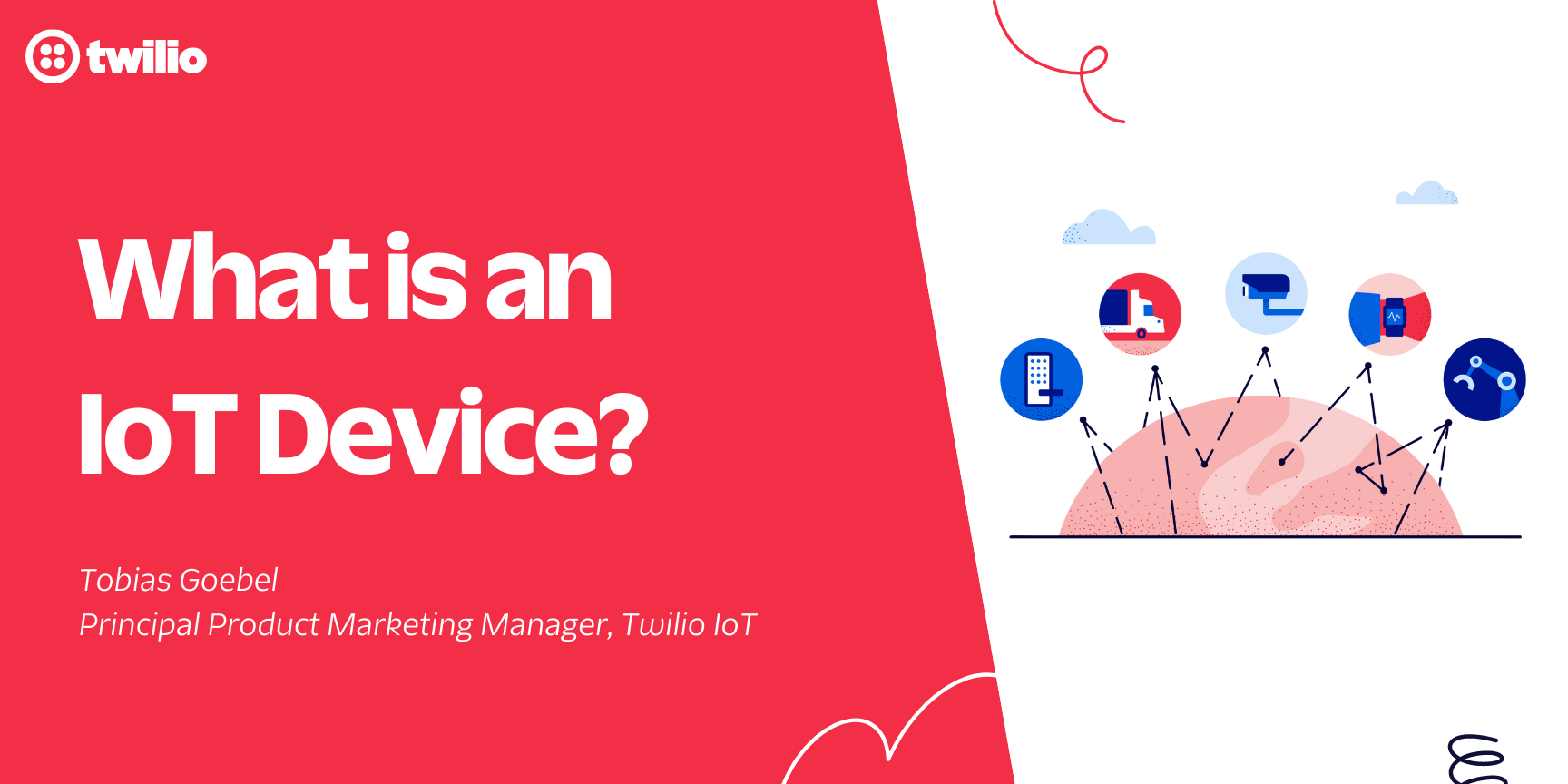What are IoT Devices?
Time to read: 4 minutes

The IoT, or Internet of Things, is one of the most promising areas of technology to help solve today’s real world problems of the physical world, be it related to our changing climate, public health, public safety, transportation, or even our convenience with living in a modern home. If you are new to IoT, you can read up our definition of What is IoT. Use cases are found in every major industry, from healthcare to agriculture to retail to government. We have put together a list of the top IoT use cases across industries for your perusal as well.
In this article, we want to dive deeper into the devices, the “things”, that make up the Internet of Things.
What is an IoT device?
An IoT device is a special-purpose, Internet-connected electronic device that uses sensors – such as temperature, light, or accelerometers – to inform the user or owner of the device of the status and condition of either itself, the object it is attached to, or the environment it finds itself in. A second big application of IoT devices is to remotely operate other machines or systems in the physical world with the help of so-called actuators, which are “movers” that can perform operations such as pushing buttons, opening valves or doors, moving robotic arms or fingers, or running motors.
In a most abstract sense, the main purpose of an IoT device is to improve personal or business outcomes by gathering data that typically gets uploaded into cloud systems for further processing, such as generating insights that can influence personal or business decisions.
Note that while consumer smartphones, tablets, or laptops also use connectivity to access the Internet, these are typically not considered IoT devices.
Examples of IoT devices
IoT devices come in all shapes and sizes, as the applications in the world of IoT are manifold.
- Utilities and energy companies are dealing with physical objects and machinery as diverse as solar panels, wind turbines, pipes, valves, batteries, tanks, electricity poles, circuit breakers, and meters, to name a few.
- In Retail, we find point-of-sale terminals, vending machines, store shelves, refrigerators & freezers, cameras, containers, trucks, pallets, and more.
- In Real Estate, objects that can be connected include lights and light switches, HVAC units, elevators, doors and door locks, garbage cans and dumpsters, air quality sensors, parking space, desks and rooms, kiosk terminals, lock boxes, thermostats, media devices, kitchen devices, and many more. Some of these are connected by default, such as kiosk terminals, others benefit from getting Internet connectivity retrofitted later.
- In the Public Sector, we can connect parking meters, security cameras, entrances/exits of public transportation, railways, roads, bridges, airport facilities, busses, trains, scooters, energy facilities, traffic lights, road signs, garbage cans, info boards, but also the “environment itself”: the status of forests, rivers, fields, soil, the air etc. can be monitored from afar thanks to IoT devices.
Giving any of these objects and devices Internet connectivity, especially where none was utilized before, will help improve efficiency in operating in any of the sectors mentioned. For more examples of IoT use cases, please see our article Top IoT Use Cases Across Industries.
What are the components of an IoT device?
Microcontrollers, MCUs, Modules, Modems, oh mmmmmy! What really IS in a piece of electronics that makes it an IoT device? In this section we want to give a high-level overview of printed circuit boards and their typical components; it is aimed at anyone who would like a rather non-technical look under the “hood” of your connected oven (pun intended), a street light your city can control from afar, or the e-scooters you might be using to get around a modern city.
IoT devices are made up of the following main components:
- A microcontroller, or MCU: This is essentially a small computer on a chip in an embedded system (=hardware with a dedicated function, here the function for the IoT device – as opposed to general-purpose hardware such as a laptop) that contains one or more processors along with memory and programmable input/output peripherals. While not technically required for an IoT device, as all the individual components could also be combined manually by a hardware designer to create a functioning computer, MCUs are commonly found in IoT devices as they simplify the further design of the circuit board to become the final IoT device.
- A modem: In the simplest terms, a modem is a dedicated chip that gives your IoT device data connectivity, e.g. to cell towers, so that your device can get “online” to perform its job as an IoT device. While the MCU gives you all the processing, data storage, and input/output capabilities a computer needs, without a modem it would remain offline and could not communicate with your cloud systems or you / your business.
- A SIM card: The most common IoT connectivity option these days is cellular connectivity. In order to utilize it, we need dedicated hardware that stores the wireless carrier network access credentials. That is the function of a SIM card. For a more comprehensive definition, please refer to our article What is an IoT SIM Card and How is it Used in IoT devices.
- Power supply: While straightforward, it is a core component of any embedded system. Another piece of hardware providing power to our circuit board (see below). IoT devices are often low-power devices and rely on batteries; power conditioning circuits are used to regulate the high voltage DC from power sources such as batteries to low voltage DC suitable for the embedded system.
- Sensors and actuators: These are what make IoT devices different from other electronic devices. Sensors are little devices that measure physical input – such as light, heat, motion, moisture, or pressure – from their environment and convert it into data that can then be uploaded to the cloud for further processing. Actuators are responsible for moving and controlling a mechanism or system, for example by opening a valve. A peculiar example of an actuator is “robot fingers” we can install in our homes to operate the likes of light switches or coffee machine buttons, if there is no direct way to connect these buttons or switches to the Internet for remote control.
- A circuit board: Printed circuit boards (PCBs) are where all of the above elements come together. A PCB, or printed wiring board, is a laminated sandwich structure of conductive and insulating layers, mainly used to affix electronic components such as the ones described above in designated locations on the outer layers by means of soldering.
Hopefully this article was able to shed some light on your questions about IoT, IoT devices, and what goes into a device. If you’d curious to hear from businesses that have implemented IoT devices to reap the rewards described above, have a look at the Twilio IoT Solution Showcase!
Related Posts
Related Resources
Twilio Docs
From APIs to SDKs to sample apps
API reference documentation, SDKs, helper libraries, quickstarts, and tutorials for your language and platform.
Resource Center
The latest ebooks, industry reports, and webinars
Learn from customer engagement experts to improve your own communication.
Ahoy
Twilio's developer community hub
Best practices, code samples, and inspiration to build communications and digital engagement experiences.


